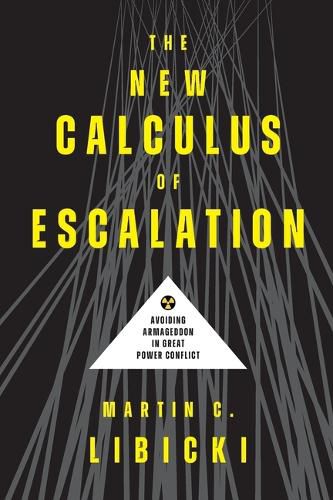Readings Newsletter
Become a Readings Member to make your shopping experience even easier.
Sign in or sign up for free!
You’re not far away from qualifying for FREE standard shipping within Australia
You’ve qualified for FREE standard shipping within Australia
The cart is loading…






A reevaluation of conflict thresholds in the context of complex cyber, conventional, and nuclear war
The return of great power competition has renewed concerns about managing escalation, lest a minor crisis inadvertently spiral into nuclear war. This has become apparent during the war between Russia and Ukraine, as Western aid for Ukraine has been predicated on avoiding Russian escalation.
The New Calculus of Escalation updates our understanding of conflict escalation dynamics for the twenty-first century with the goal of reducing the possibility of a catastrophic war. To improve mutual understanding among states, Libicki rethinks conflict thresholds and exit ramps that manage escalation. During the Cold War, there were two critical thresholds-one between peace and war, and one between conventional war and nuclear war. But ongoing developments in cyber and other advanced military technologies threaten command and control and blur the old thresholds.
Military strategists, international relations scholars, and graduate students will benefit from this book's cogent analytic framework in shaping future debates.
$9.00 standard shipping within Australia
FREE standard shipping within Australia for orders over $100.00
Express & International shipping calculated at checkout
A reevaluation of conflict thresholds in the context of complex cyber, conventional, and nuclear war
The return of great power competition has renewed concerns about managing escalation, lest a minor crisis inadvertently spiral into nuclear war. This has become apparent during the war between Russia and Ukraine, as Western aid for Ukraine has been predicated on avoiding Russian escalation.
The New Calculus of Escalation updates our understanding of conflict escalation dynamics for the twenty-first century with the goal of reducing the possibility of a catastrophic war. To improve mutual understanding among states, Libicki rethinks conflict thresholds and exit ramps that manage escalation. During the Cold War, there were two critical thresholds-one between peace and war, and one between conventional war and nuclear war. But ongoing developments in cyber and other advanced military technologies threaten command and control and blur the old thresholds.
Military strategists, international relations scholars, and graduate students will benefit from this book's cogent analytic framework in shaping future debates.